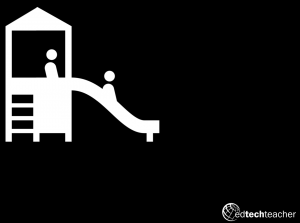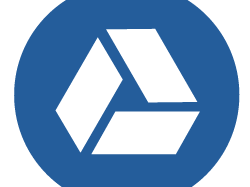Today marks the second EdTechTeacher Google Jamboree. Tom Daccord, Justin Reich, Greg Kulowiec and Richard Byrne kick off the day with Ignite talks - all LIVE blogged below.
Monday/Someday
Tom Daccord, Director of EdTechTeacher, kicks off the event with the Monday/Someday dichotomy. Someday is your vision, your view of what may be possible. To start to think about this, ask yourself, "What does awesome look like?" Someday is the pillar and foundation of success for any technology integration program. Pockets of excellence always exist within classrooms, schools, and teachers. However, if the ultimate goal is systemic innovation and a move towards purposeful technology integration, then we need to ask, "What's your vision for great learning?"
Tom then tells about walking into the Medfield session at the iPad Summit a few weeks ago. At the end of the session, he spoke with a highly regarded technology integration specialist from Nebraska. The other educator explained how impressed he was with the clarity of the vision and the alignment of all efforts towards this vision. While he has seen those pockets of excellence, having an actual plan to attain that ultimate goal.
One way to make this concrete, is to ask the question "What do you want your students to be able to do?" At the end of a day, week, or semester, what goals do you want your students to be able to achieve. To do this, we have to think about Monday. What are the tools and strategies that can help students immediately achieve those goals. As a framework for constructing student-centric learning and student creations, Tom introduces Ben Shneiderman's C-R-C-D framework.
- Collect - teach search skills as a way to ultimately build media literacy and the ability to evaluate knowledge
- Relate - begin with Google Drive and collaborating with Docs. While this is a good starting point, it's ultimately scaffolding the complex communication and collaboration skills that they will need in the future.
- Create - though the ultimate goal is for students to create new artifacts as evidence of their learning, an immediate stepping stone may be a tool like Padlet or Google Drawings. The low hanging fruit can be the beginnings of a way to express creativity in multiple ways with the overriding goal of reaching all learners. Through multiple modalities, teachers have new ways to be able to get to know their learners.
- Donate - this is the public service component of learning. How are students putting their learning in service of others? As a Monday example, what if students shared notes, public service announcements, or content that may be useful to other students beyond the district. Students now have the opportunity to not only express what they have learned but also to benefit others.
Not all activities will include all four of these elements, but the broader question is to consider how to design learning opportunities that include aspects of this framework. For a tangible way to get started, Tom recommends that teachers visit our App Recommendations page. He comments on how all of the recommendations are organized by learning activity - by what teachers may want their students to do.
To wrap up his talk, Tom leaves us with an inspirational "Someday."
https://www.youtube.com/watch?v=BMR-oMpCbjo
So, what does awesome look like? We need to start with a vision and then begin building stepping stones.
The Greatest EdTech Generation
One of the challenges that we have in the field of educational technology, says Justin Reich, is that we imbue technologies with magical powers. He shows a picture of a woman with a typewriter and says that all technologies have been assumed to be revolutionary and yet there has been little innovation. Based on survey data from 2011, Justin talks about how students indicate that in the 15 years between 1996 and 2012. In that period, students did not indicate any significant shift in how they used computers - most students reported that most of their time was spent on drill-and-practice.
In the 1980's when he published Mindstorms, Seymore Papert predicted that one of two things would happen with schools and computers. Either we would teach students to program computers or allow computers to program kids. Along those same lines, Justin asks, "are we going to use computers to get things into kids' heads or out of kids' heads?" However, if we look at the most amazing things happening in classrooms where teachers are truly transforming student learning, then we see trends about how kids are engaging in global problem solving and projects. The question, then, is how to scale the pockets of excellence across all of our schools.
How does technology get put in the service of learning?
In all of the moments that present themselves today, Justin challenges us to ask continually "what is this for?" Justin thinks that the challenges we face are too big for individual teachers to take on themselves. He hopes that every person in this room sees themselves as an advocate for taking on problems within their schools and communities. Whether you are a district administrator who can influence a district or a classroom teacher who may be able to influence a grade level team, Justin charges all of us to share our learning and collaborate to bring transformation and innovation to the environment.
Two things that Justin wants us to think about is what are the amazing ways that I can use these tools in the service of learning and who can I influence with this new knowledge and understanding.
A Cautionary Tale
Greg begins by asking who remembers teaching in an environment with no technology, network, computer, anything. In a pre-Google world, Greg remembers asking his students to create Google accounts just to enter the new "wild wild west."
 When Greg first started using Drive, his account was a disaster. He talks about how we went from being closed to open to back to closed again with Google Apps for Education, Google Drive, and Google Classroom. The idea here is that maybe we are doing a disservice to students if their only experience with Google Drive is via the uber-organization of Classroom. If the exposure of our students is extreme automation, then maybe we are limiting their potential exploration. While Classroom is useful, maybe we need to allow students to experience some chaos. Maybe students need to begin to consider life outside of the Classroom playground.
When Greg first started using Drive, his account was a disaster. He talks about how we went from being closed to open to back to closed again with Google Apps for Education, Google Drive, and Google Classroom. The idea here is that maybe we are doing a disservice to students if their only experience with Google Drive is via the uber-organization of Classroom. If the exposure of our students is extreme automation, then maybe we are limiting their potential exploration. While Classroom is useful, maybe we need to allow students to experience some chaos. Maybe students need to begin to consider life outside of the Classroom playground.
Ultimately, Greg hopes that students transition to a more complex playground. In reality, no one in the world says, "Open Classroom, go to the folder, find the file that I named for you, and then do your work." Greg asks us to think about the balance between taming the organizational logistics and scaffolding students' learning about how to build digital skills in an increasingly complex world.
The idea and message is that we need to consider the potential for opening up the world to allow students to own their work, to move between districts, to transition into a broader digital ecosystem. We need to embrace the messiness and the unclear pathway, so while we are using the tools, we need to think about it within a broader context.
Preparing Students to Work Independently
Richard says that his talk is based on conversations with friends who ask, "what do you do?" The other part of this talk is the video, Did You Know? So he says that we should acknowledge what's new in school and in the workplace because that is changing all of the time.
Think about how kids are connected all of the time. They can look up information on their phones and their watches. If students can't find information, they will seek out someone who does know. Increasingly, students expect more choices when they access their learning. If a school doesn't offer what a student wants, they can go online and access it.
The workplace is changing. Richard illustrates this by talking about how his realtor hired a 17-year old to fly a drone over his house to take pictures. He also talks about a friend who works virtually rather than in a building. Students are beginning to expect this freedom, but it also means that students need to be able to work independently. How do we teach them to find and maintain a job or even create a job. Increasingly, we are changing the concept of what it means to be an expert. With students, what is normal to them could be amazing to us. This raises the question of what does expert knowledge look like?
With all of this, our job as a teacher is to create wise consumers of education. While students expect instant access, but they don't actually stop and think. They don't ask, "what do I already know?" Right now, their reaction is to Google questions rather than to think about what do I know and who do I know? Ultimately, we want our students to think outside of the box and to question the validity of information. We want students to publish their work and share what they have learned.
Ultimately, though we want our students to work independently and to validate information, we also want them to acknowledge when they need help and then seek it out through their connections. We need to ask our students, "what do your students want to be?"


